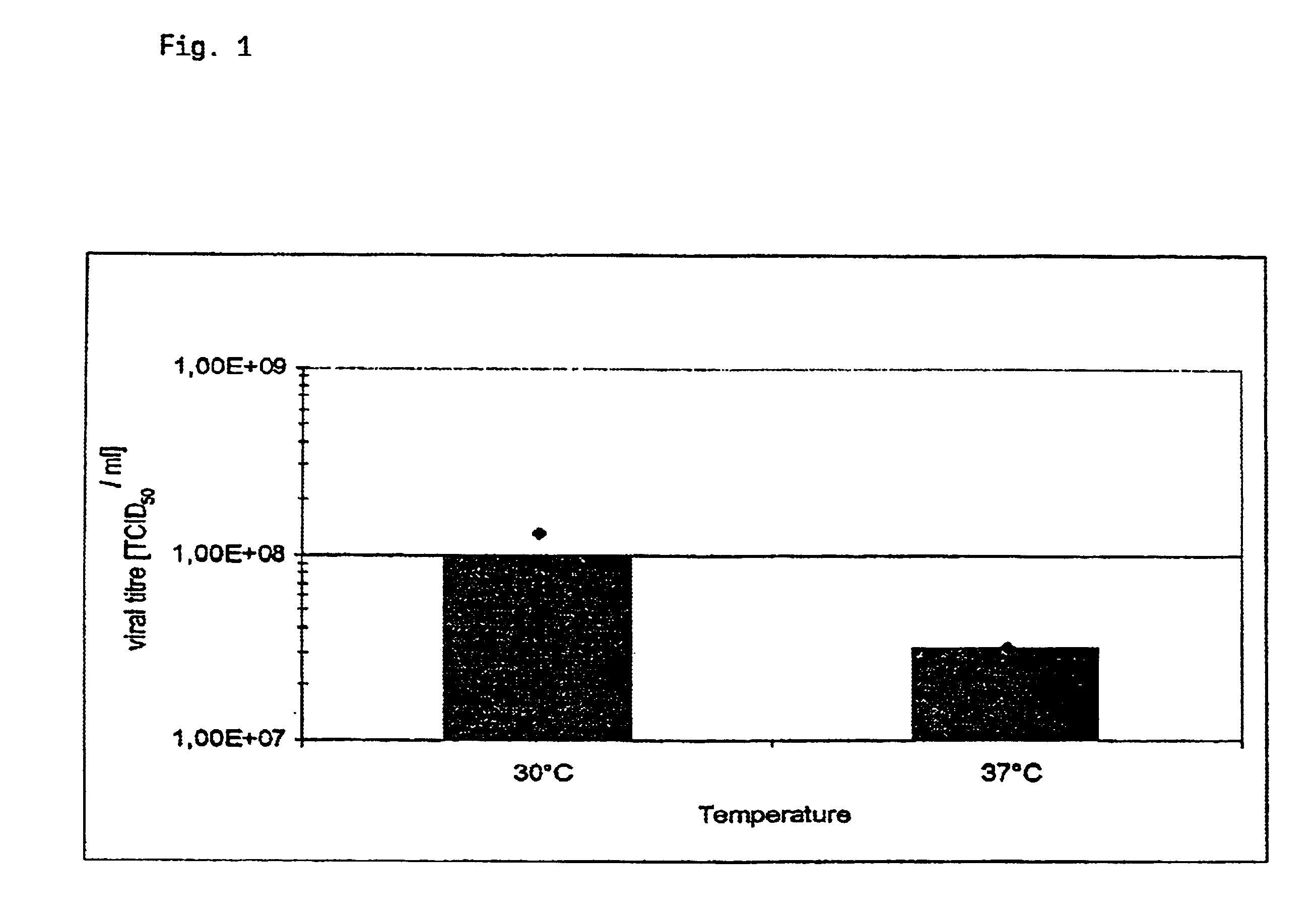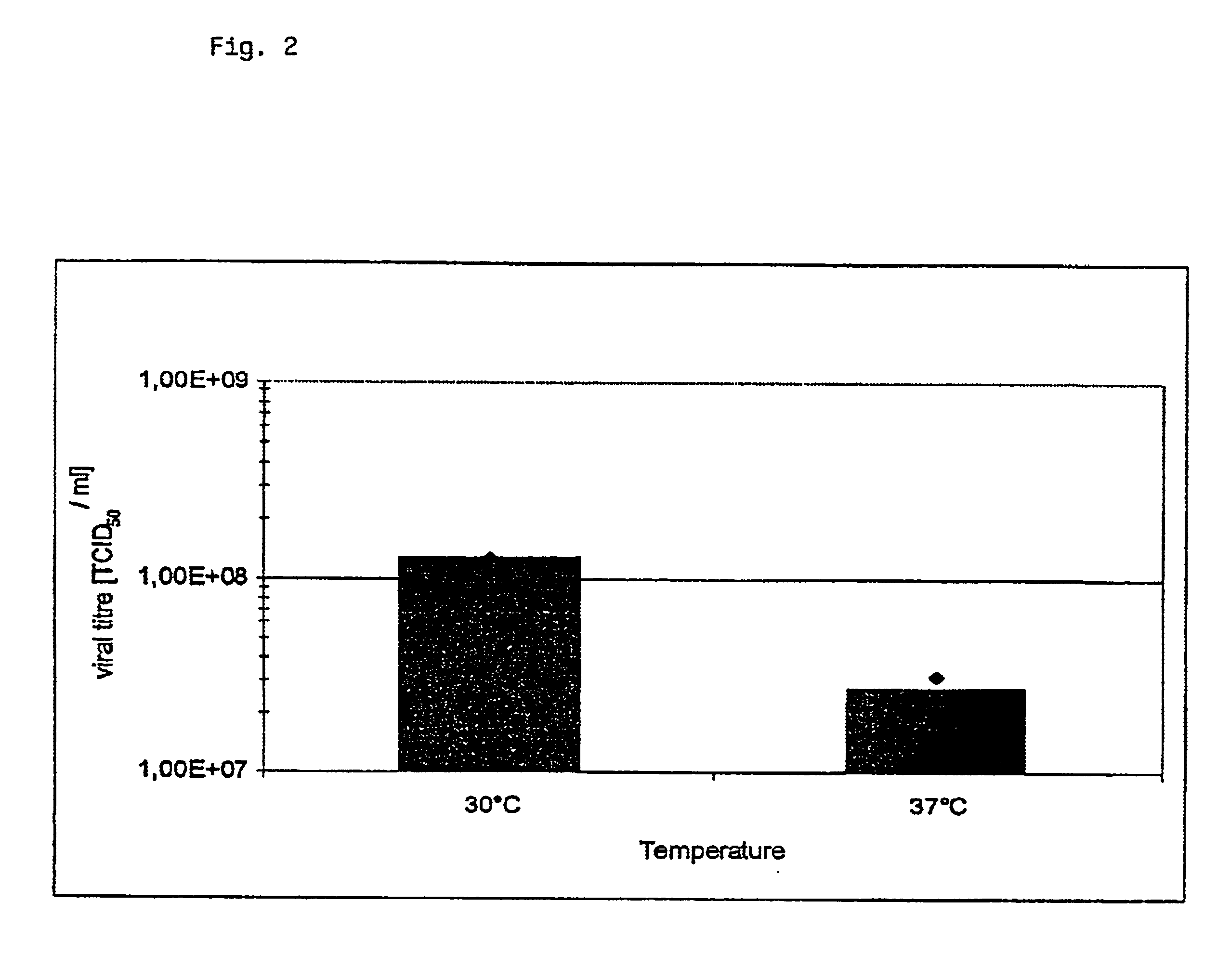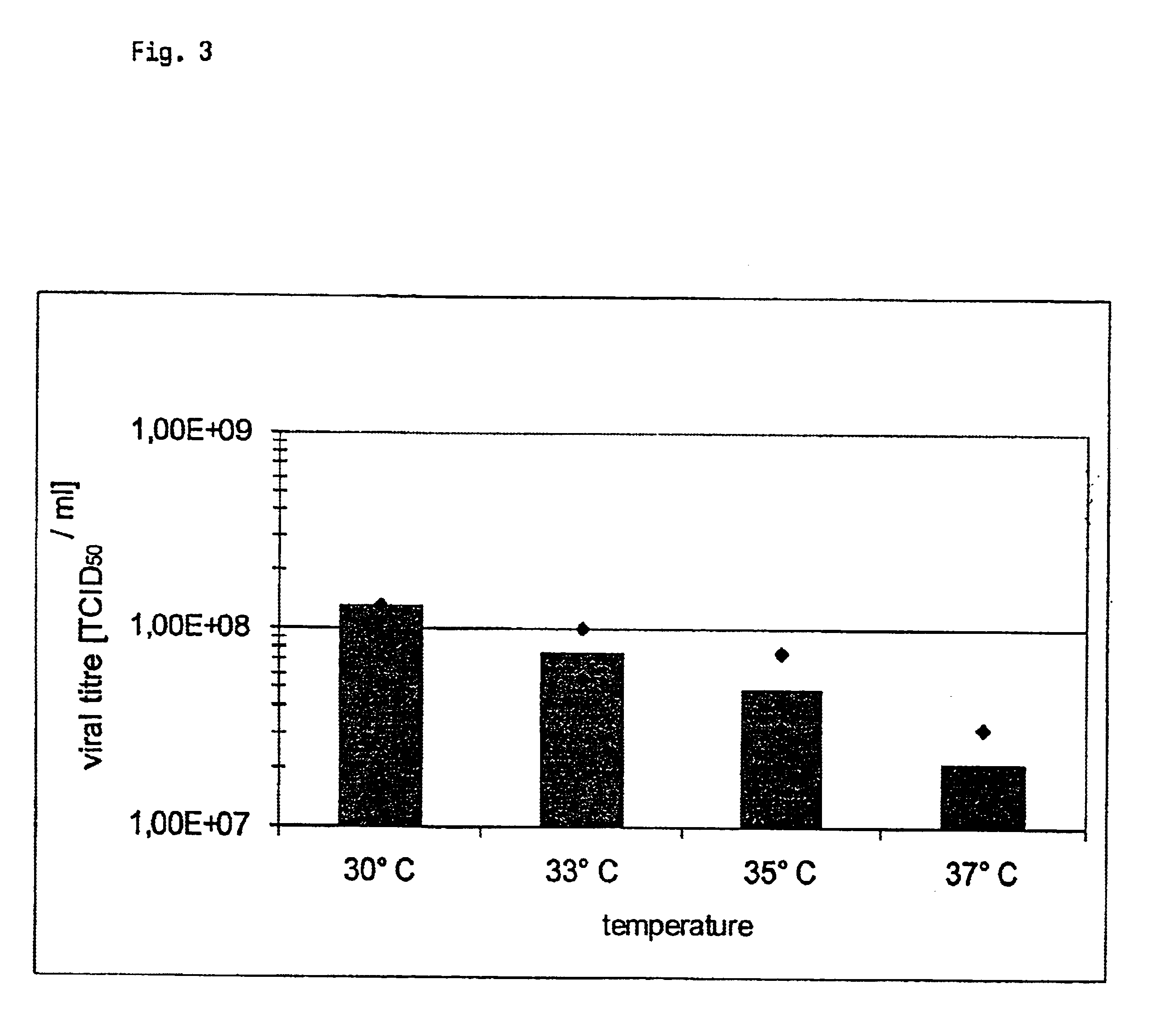Method for virus propagation
a virus and virus technology, applied in the field of virus propagation, can solve the problems of not disclosing the cultivation of chordopoxviruses, reducing the specificity of non-human poxviruses, and unable to disclose the cultivation of non-human poxviruses, etc., and achieve the effect of higher yield of virus particles
- Summary
- Abstract
- Description
- Claims
- Application Information
AI Technical Summary
Benefits of technology
Problems solved by technology
Method used
Image
Examples
example 1
Effect of the Temperature on the Multiplication of MVA
Cell Culture Conditions
[0069]Primary CEF-cells were seeded in stationary flasks with a seeding cell density of 2×107 CEF cells / 185cm2. Cells were seeded in VP-SFM +4 mM L-Glutamine and 1% Antibiotics / Antimycotics. At day four after seeding a cell density of 5×107 CEF-cells / 185 cm2 was assumed. The cells were infected with 0.1 TCID50 / cell MVA-BN (deposited at ECACC under deposit no. V 00083008) by using RPMI w / o FCS. The infection, followed by incubation for 72 h, was performed at 30° C. and 37° C. (in experiments 1 and 2 with two different CEF preparations), at 30, 33, 35 and 37° C. (experiment 3) and 26, 28, 30 and 33° C. (experiment 4). The experiments were performed in duplicate for each temperature. Virus replication was stopped by scraping the cells into the media and by freezing media and cells together at −20° C. This mixture was freeze / thawed another two times to mechanically release the virus from the cells. For the expe...
example 2
Effect of the Temperature on the Multiplication of Vacciniavirus Strain Elstree
[0082]In another approach Vaccinia virus strain Elstree was tested in addition to MVA-BN for temperature-dependance. MVA-BN and Elstree were multiplied on CEF-cells. For the experiment primary CEF-cells were seeded in stationary flasks with a seeding cell density of 2E+07 CEF cells / 175 cm2. Cells were seeded in culture media +4 mM L-Glutamine and 1% Antibiotics / Antimycotics. At day four after seeding a cell density of 5E+07 CEF-cells / 175 cm2 was assumed. The cells were infected with 0.1 TCID50 / cell MVA-BN by using RPMI w / o FCS and Elstree, respectively. The infection, followed by incubation for 72 h, was performed at 30° C. and 37° C. The experiment was performed in triplicates for each temperature. Virus replication was stopped by freezing stationary flasks at −20° C. This mixture was freeze / thawed another three times to mechanically release the virus from the cells.
[0083]Virus titers from every stationa...
PUM
| Property | Measurement | Unit |
|---|---|---|
| temperature | aaaaa | aaaaa |
| temperature | aaaaa | aaaaa |
| temperature | aaaaa | aaaaa |
Abstract
Description
Claims
Application Information
 Login to View More
Login to View More - R&D
- Intellectual Property
- Life Sciences
- Materials
- Tech Scout
- Unparalleled Data Quality
- Higher Quality Content
- 60% Fewer Hallucinations
Browse by: Latest US Patents, China's latest patents, Technical Efficacy Thesaurus, Application Domain, Technology Topic, Popular Technical Reports.
© 2025 PatSnap. All rights reserved.Legal|Privacy policy|Modern Slavery Act Transparency Statement|Sitemap|About US| Contact US: help@patsnap.com



